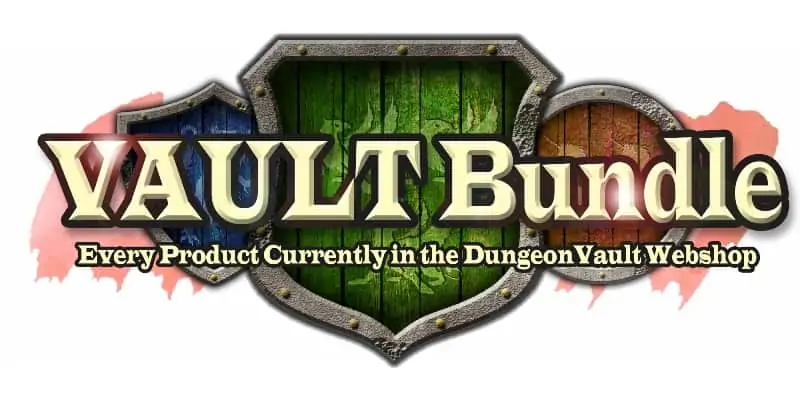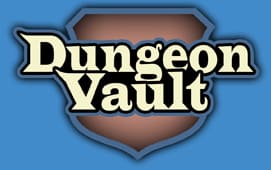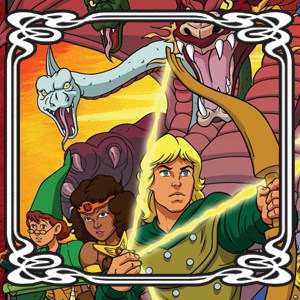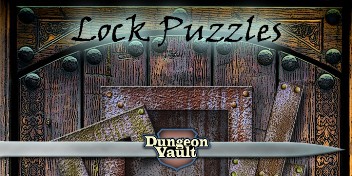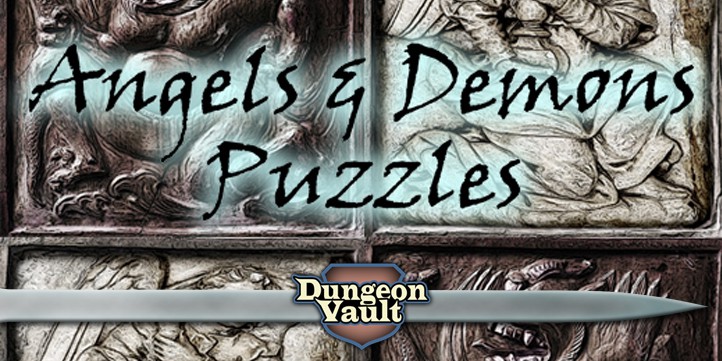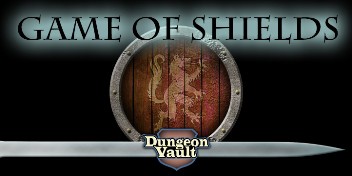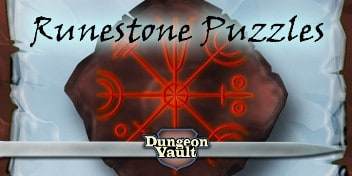
Using Puzzles in Dungeons and Dragons can be a great way to switch things up. But dungeon masters do need to match their puzzles to players skill level and experience. You don’t want to just design any clever puzzle, but a puzzle that is just right for your players.
Fortunately most players really like puzzles IF they feel like fair challenges. And that makes sense. You wouldn’t have level one players face off against Tiamat, would you? That would just be bad DMing…
So how do you make sure you select puzzles that perfectly match the skill level of your players? That’s what this article is all about.
1. Ask players what puzzles they enjoy the most (and least)
There’s a common belief that players either love or hate puzzles in their game. So I did a quick facebook survey to learn if that holds true. And as it turns out, only 4% of players really don’t like puzzles in their games ever. And 37% absolutely loved puzzles. The rest fell into the middle category and liked them as much as other challenges. So it’s rare to find a player that hates puzzles. Still, with any challenge you want to find out what players enjoy the most.
The easiest way to find out player preferences is to just ask them. In my experience, most players who say they don’t like puzzles have had a bad experience. Or they are embarrassed to be seen failing at a puzzle. Both problems can be easily solved.
For this, you have 3 options:
- First, throw in small easy puzzles that lead to quick successes.
- Second, challenge both the player AND their character. Allow players to roll for hints. This way, if they fail it’s because of the dice and PC stats, which makes it less personal.
- Third, involve the player in some other way that is still instrumental to solving the puzzle. Such as, holding back a tide of kobolds while the party solves the puzzle. This way the player still contributes.
If players tell you what they like, pick those types of puzzles. But be aware that a lot of players aren’t that familiar with their options. So you can introduce short puzzles of different types to see what is right for them.
2. Estimate the skill level for each player
The first thing you want to do is estimate the skill level for each player. There are a couple of factors that play into this. (Apart from being a puzzle designer I also teach developmental psychology. These are some advanced tips for estimating skill level. If that’s too detailed you can just make a general estimation).
- Developmental age
- Player intelligence
- Problem solving skills
- Social skills
- Self-esteem
A player’s developmental age is not their calendar age but the age they are in their mental development in terms of puzzle solving. Usually the calendar age and developmental age match. But with neurodiverse players – such as player with autism – they can be different.
We don’t like to talk about intelligence but it’s a fact of life that players are not all equally intelligent. That’s okay, being inclusive as a DM means involving everyone at the level they are comfortable with. And there are puzzles for every level of intelligence. All we need to do as DMs is pick puzzles that are challenging, but not overwhelming for the player. Of course, within a group of players there can be many levels of intelligence. You can give assign seperate challenges to each player. But they can also make skill checks for hints or solving part of the puzzle.
Problem solving skills have to do with planning, logical reasoning, but also managing frustration, and reading. Here we want to take into account problems like dyslexia and present players who have difficulty reading with symbol puzzles. Players with dyscalculie generally prefer story based puzzles with association rather than math based puzzles. And players with ADHD can have difficulty with puzzle that take too long of require a lot of planning. Of course, these are generalisations. Always ask instead of assume.
Many puzzles require teamwork and social skills. Some players tend to hog the puzzle, while others have difficulty joining in or deliberating with other players. For educators, using teamwork puzzles to train social skills is actually a good idea. But if your players just want to relax and play a fun game, don’t challenge them too much.
The last factor is self-esteem. Some players are shy about joining in or have a fear of failure. Puzzles, for some reason, tend to trigger fear of failure more than other challenges. It’s probably because they can feel more like tests and less like play. So be mindful of that and start with easy puzzles to create success experiences. Also keeping things light and fun will help. Avoid puzzles with a time limit because those can really stress players out who have low self-esteem. We even did a survey under 1.000+ players and zero players chose timed puzzles as their favorite.
3. Pick a D&D puzzle type that matches the players’ skill level
Now that you know players preferences, you still want to pick puzzles that match their skill level. If you’re playing D&D with kids, you’ll need different puzzles than when you’re playing with students from the MIT physics department.
I’ll divide skill level into beginner, intermediate, and advanced:
Beginner level players prefer puzzles with lots of easy steps to solving them. This way, they don’t have to fear not being able to solve the puzzle. But because the puzzle still takes more work to solve, they still get that feeling of accomplishment.
A jigsaw puzzle is a perfect example of a beginners puzzle. Almost everyone who spends enough time and effort can solve these eventually.
For beginners I would suggest using Lock Puzzles and Angels and Demons Puzzles.
Intermediate level players have enough experience to enjoy working together on solving any challenge in D&D. And puzzles are no different. Most of my puzzles fall into this category.
I recommend using Rune Puzzles, and Dungeon Puzzles for cooperative intermediate level play.
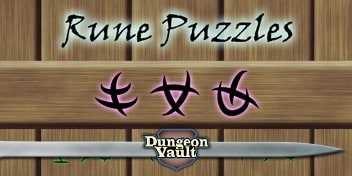
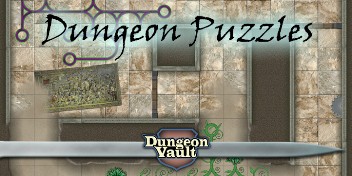
Advanced level players really like a challenge and enjoy puzzles that require lateral thinking. They also enjoy puzzles that add depth to the entire campaign world. So instead of having a puzzle that just locks a chest, they more often prefer puzzles that double as a rule system for politics or puzzles that are also a system for magic item creation.
I recommend Potion Puzzles which is also a magic item creation system that you can use throughout your campaign. And the Game of Shields is a puzzle system for running politics in your game.
4. Adjust the puzzle difficulty on the fly
If you are not sure of the level of difficulty your players enjoy there are also a couple of puzzles for which you can easily adjust the difficulty level on the fly.
Lock puzzles start off incredibly easy, but you can add puzzle pieces to increase the difficulty during play or give hints to decrease the difficulty.
That same is true for Runestone Puzzles. This is really a puzzle system that you can make as easy or difficult as you wish by adding pieces or clues.
5. Check again if players enjoyed themselves after the session
As with any player challenge, checking to see if players enjoyed the puzzle after they finish the session is always a good idea.
All of the puzzles mentioned in this article and many more can be found in the Vault Bundle. It has all the puzzle you could want as a DM. There is something for every skill level and every player preference. And these puzzles have all been thoroughly play tested with several groups.
